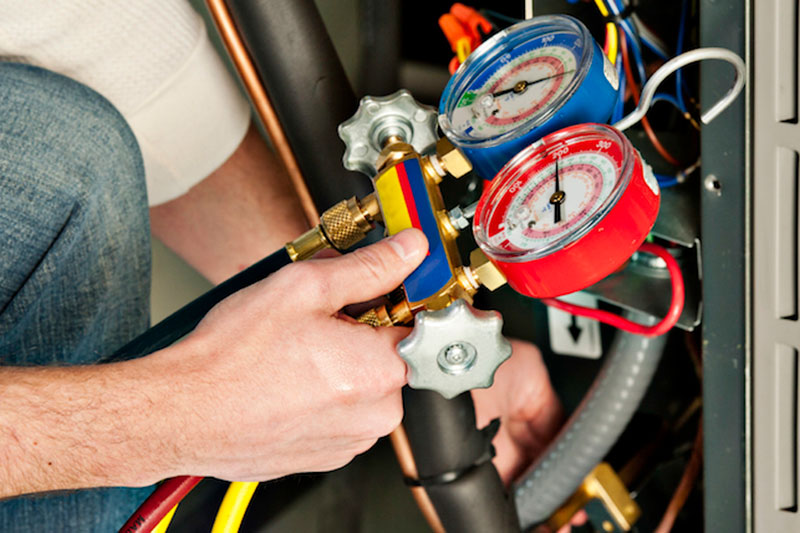
You might not think much about how your air conditioner functions, but it depends on refrigerant to keep your home fresh. This refrigerant is subject to environmental regulation, as it contains chemicals.
Depending on when your air conditioner was added to your home, it may require R-22, R-410A or R-32 refrigerant. We’ll review the differences and which air conditioner refrigerants are being phased out in Omaha, in addition to how these phaseouts affect you.
What’s R-22 and Why Is It No Longer Being Made?
If your air conditioner was installed before 2010, it possibly contains Freon®. You can discover if your air conditioner uses it by calling us at 402-628-0206. You can also examine the name plate on your air conditioner condenser, which is situated outside your house. This sticker will include info on what type of refrigerant your AC uses.
Freon, which is also called R-22, has chlorine. Scientists consider this chemical to be harmful to the earth’s ozone layer and one that results in global warming. The Environmental Protection Agency, which manages refrigerants in the United States, barred its creation and import in January 2020.
I Use an Air Conditioner with R-22. Do I Need to Get a New One?
It depends. If your air conditioning is running as designed, you can continue to keep it. With regular air conditioner maintenance, you can expect your AC to operate around 15–20 years. However, the Department of Energy says that removing a 10-year-old air conditioner could save you 20–40% on summertime cooling expenses!
If you don’t install a new air conditioner, it might create a problem if you require air conditioning repair later on, specifically for refrigerant. Repairs can be more expensive, as only limited amounts of recycled and reclaimed R-22 is accessible.
With the end of R-22, a lot of new air conditioners now have Puron®. Also referred to as R-410A, this refrigerant was created to keep the ozone layer strong. Since it needs an incompatible pressure level, it doesn’t work with air conditioners that rely on R-22 for cooling.
However, Puron still has the possibility to create global warming. As a result, it could also ultimately be discontinued. Although it hasn’t been mandated yet for residential air conditioners, it’s expected sometime this decade.
What Refrigerant Will Take the Place of R-410A?
In preparation of the discontinuation, some manufacturers have started using R-32 in new air conditioners. This refrigerant rates low for global warming possibility—approximately one-third less than R-410A. And it also decreases energy consumption by around 10%, according to the Intergovernmental Panel on Climate Change’s Fourth Assessment Report. That’s savings that might be passed on to you through your utility bills.
The Frazier Company Can Assist with All Your Air Conditioning Needs
In short, the alterations to air conditioner refrigerant probably won’t affect you greatly until you need repairs. But as we talked about beforehand, repairs connected to refrigerant might be more expensive due to the restricted levels on hand.
Not to mention, your air conditioner often malfunctions at the worst time, typically on the hottest day when we’re getting many other requests for AC repair.
If your air conditioner uses an outdated refrigerant or is more than 15 years old, we recommend upgrading to a modern, energy-efficient air conditioner. This provides a trouble-free summer and could even decrease your electrical bills, especially if you select an ENERGY STAR®-rated air conditioner. Plus, The Frazier Company offers many financing programs to make your new air conditioner even more affordable. Contact us at 402-628-0206 to begin now with a free estimate.



